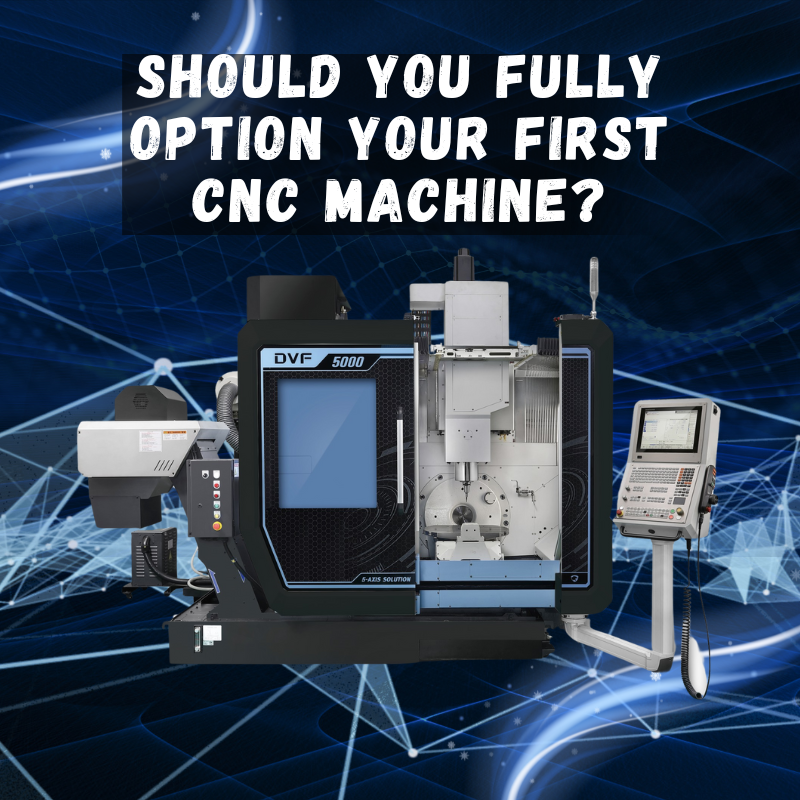Lights-out machining has become a key strategy for manufacturers looking to maximize efficiency and reduce labor costs. Running CNC machines unattended allows shops to produce parts overnight, increase machine utilization, and remain competitive. However, not all CNC machines are built for continuous, unmanned operation. Choosing the right machine is crucial for ensuring reliable, uninterrupted production.
When investing in a CNC for lights-out manufacturing, it’s important to focus on machine reliability, automation, tool monitoring, and remote tracking. A machine that lacks these capabilities may struggle with tool failures, chip buildup, or process inconsistencies, making unattended production risky and costly.
Misconceptions About Lights-Out Machining
Many shops assume that lights-out machining is as simple as running machines overnight, but true unattended production requires careful planning. Here are some common misconceptions:
· A bar feeder alone makes my shop lights-out ready – A bar feeder helps, but tool monitoring, chip management, and remote tracking are also required.
· Unattended machining means no supervision at all – While human oversight is reduced, remote monitoring ensures machines stay operational.
· Lights-out machining works for every type of job – Highly complex, high-mix jobs requiring frequent adjustments are difficult to automate.
· Running overnight automatically increases profits – Without the right tooling and automation, unexpected failures can lead to scrap and downtime.
Machine Reliability and Durability
For lights-out machining to be successful, the machine must handle long production cycles without losing accuracy. A CNC that drifts out of tolerance or suffers excessive wear will cause scrap, wasted time, and lost profits.
A rigid machine frame and high-quality linear guides ensure precision and stability over extended runs. Thermal compensation systems adjust for temperature fluctuations, preventing machining errors caused by material expansion. Machines designed for long maintenance intervals minimize downtime and are better suited for continuous operation.
Automation and Part Handling
Unattended machining is only possible if the CNC can load and unload parts automatically. Without automation, an operator would need to be present to swap workpieces, limiting the effectiveness of a lights-out setup.
For turning applications, bar feeders supply raw material continuously, reducing the need for manual loading. In milling operations, pallet changers allow the machine to switch to the next part without operator intervention. Robotic arms and conveyor systems further automate part handling, ensuring continuous operation with minimal human oversight.
Tool Monitoring and Breakage Detection
Tool failures are among the biggest risks in lights-out machining. A broken tool mid-cycle can lead to scrapped parts, spindle damage, and costly downtime.
To prevent this, modern CNC machines include tool wear sensors that track tool life and alert operators when a tool needs replacement. Breakage detection systems automatically stop machining when a tool fails, preventing further damage. Some machines feature adaptive machining, where the system adjusts feeds and speeds based on real-time tool wear to extend tool life.
Chip and Coolant Management
Chip accumulation is another major concern in unattended production. Without proper chip evacuation, excessive buildup can lead to tool breakage and machine failures.
A well-designed CNC for lights-out operation includes high-capacity chip conveyors and through-spindle coolant systems that flush chips away from the cutting area. Automatic coolant monitoring ensures proper lubrication, reducing tool wear and preventing overheating.
Remote Monitoring and Smart Alerts
Since no operator is present during a lights-out shift, real-time monitoring is essential. CNC machines with IoT connectivity allow operators to check machine status remotely via computers or mobile devices. Some systems provide live camera feeds, enabling shop owners to visually monitor machining operations from anywhere.
Automated alerts are another key feature. If a tool breaks, coolant runs low, or the machine stops unexpectedly, the system sends notifications via text or email, ensuring that issues are addressed quickly.
Can You Run Lights-Out Between Staffed Shifts?
Many shops choose a hybrid approach, running lights-out shifts between staffed operations. This allows complex setups to be handled during the day while repeatable, proven jobs run unattended at night.
Cost and ROI of Lights-Out CNC Machining
Investing in a CNC machine for lights-out production requires careful consideration of costs and potential return on investment (ROI). While the upfront cost of automation, tool monitoring systems, and remote tracking softwarecan be significant, the long-term savings on labor and increased machine uptime often justify the expense.
Pros of Combining Staffed & Lights-Out Shifts
· Maximizes machine utilization by keeping spindles running 24/7.
· Reduces labor costs while maintaining flexibility for custom jobs.
· Allows operators to focus on programming, setup, and quality control.
Challenges of Running Hybrid Shifts
· Requires reliable automation to prevent stoppages during unattended runs.
· Job scheduling must balance complex setups with repeatable lights-out work.
· Machines must be equipped with advanced monitoring and safety features.
CNC Machine Buyer’s Checklist for Lights-Out Manufacturing
Before purchasing a CNC machine for lights-out production, ensure it meets the following requirements:
☐ Designed for 24/7 operation with a rigid frame and thermal compensation.
☐ Compatible with automation (bar feeders, pallet changers, robotic loaders).
☐ Equipped with tool wear monitoring and breakage detection.
☐ Includes high-capacity chip conveyors and coolant management systems.
☐ Supports remote monitoring with real-time alerts.
☐ Has power failure recovery to resume jobs after unexpected shutdowns.
A CNC that lacks these features may struggle with unattended production, leading to increased downtime and maintenance costs.
Final Considerations: Is Lights-Out Machining Right for You?
Before investing in a new CNC machine, consider whether your shop’s workflow is suited for automation. If you run repeatable, high-volume jobs with minimal manual adjustments, lights-out production can be a game-changer. However, if your work requires frequent setups and operator oversight, a hybrid approach may be a better fit.
By choosing a CNC built for 24/7 operation, equipped with automation and monitoring capabilities, manufacturers can achieve greater efficiency, reduce costs, and stay competitive in today’s market. With the right planning and technology, lights-out machining can significantly boost production without increasing labor expenses.




